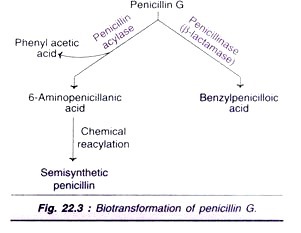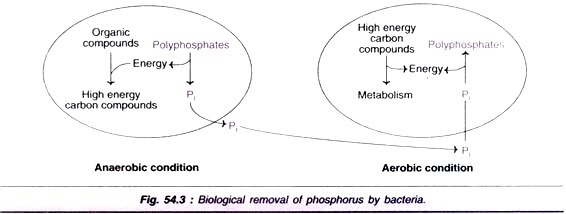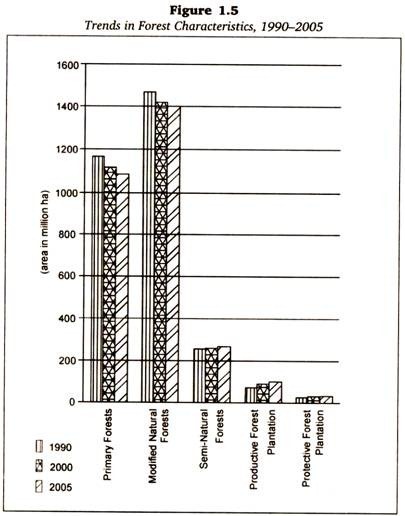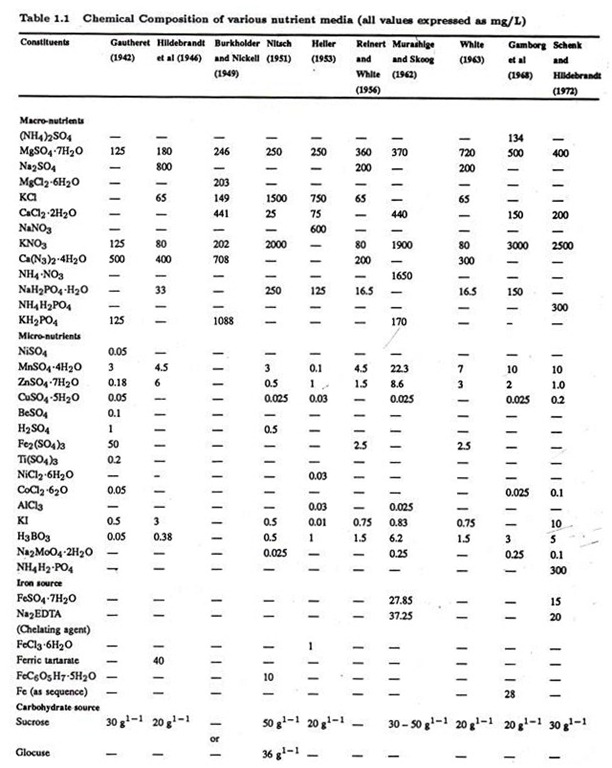Contents
I. Pituitary Gland:
The human pituitary gland is a reddish-gray oval structure about 10 mm. in diameter, 0.5 gms in weight, located on the ventral side of diencephalon of brain.
It hangs below the hypothalamus by a stalk called infundibulum.
The other names of pituitary are hypophysis and master gland.
Basically it is composed of two parts: adenohypophysis and neurohypophysis. Adenohypophysis consists of anterior lobe {pars distalis and pars tuberalis) and intermediate lobe (pars inter-media). The neurohypophysis, otherwise called as posterior lobe, is composed of pars nervosa and infundibulum (Fig. 2.2).
The pituitary gland is rightly called as “Band master of endocrine orchestra” as it secretes a number of hormones which regulates the activity of other endocrine glands. The hormones secreted from different parts with their activities are described below.
Anterior Lobe:
Pars distalis of anterior lobe produces the following six hormones but pars tuberalis does not secrete any hormone and is just a supporting structure (Fig. 2.2B).
(i) Growth Hormone (GH):
This is also called as somatotrophic hormone (STH). It stimulates growth of bones, cartilages, muscles, visceral organs and the body as a whole. It also promotes protein synthesis, intestinal calcium absorption and glycogenolysis.
Hyposecretion:
(i) Dwarfism in childhood.
(ii) Simmond’s disease during adult life
Hyper secretion:
(i) Gigantism during childhood
(ii) Acromegaly in adult life.
(ii) Adrenocorticotropic Hormone (ACTH):
This hormone is a tropic hormone i.e. influences the activity of other endocrine gland. Here the target endocrine gland is cortex of adrenal gland which is stimulated to produce glucocorticoids. ACTH is secreted in more amounts during emotional and physical stress.
(iii) Thyroid Stimulating Hormone (TSH):
Also known as Thyrotrophic hormone (TTH). It controls the growth and activity of thyroid gland. It also stimulates thyroid gland to synthesise thyroxine and release it into blood.
(iv) Follicle Stimulating Hormone (FSH):
It is a gonadotropic hormone. In females it stimulates the ovaries to develop and maturation of ovarian follicles. The same hormone in males stimulates testes for development of seminiferous tubules and spermatogenesis. Due to its action on both male and female gametes, FSH is also called Gametokinetic factor.
(v) Luteinizing Hormone (LH).
This is another gonadotropic hormone and is also known as Interstitial Cell Stimulating Hormone’ (ICSH). In females this hormone promotes final maturation of ovarian follicle, ovulation and formation of corpus luteum. In males it stimulates the interstitial cells of testes causing them to release male sex hormones (androgens).
(vi) Lactogenic Hormone:
This is also called as prolactin or Luteotropic hormone (LTH). It stimulates the growth of mammary glands in females during pregnancy and initiates secretion of milk after child birth.
Intermediate Lobe:
The intermediate lobe or pars intermidia of pituitary produces only one hormone i.e. Melanocyte Stimulating Hormone (MSH) or Intermedin. This hormone is responsible for synthesis of melanin pigment in melanophore or melanocyte cells. It also brings about dispersion of melanin pigments in melanophore cells and the darkening of the skin is affected.
The dramatic phenomenon of colour-change in many fishes, amphibians and reptiles is due to influence of this hormone. In higher vertebrates including man this hormone has no significant role but in certain conditions such as in pregnant women the darkening of the skin is due to increased production of MSH.
Neurohypophysis:
The neurohypophysis or posterior lobe of pituitary releases only two peptide hormones. Both these hormones are synthesized in the hypothalamus and are carried to the posterior lobe along the nerve fibres where they are stored. They are released into blood as and when required.
1. Oxytocin (Pitocin):
This hormone stimulates the contraction of smooth muscles of uterus in pregnant women and causes easy child birth. It also contracts the smooth muscles of mammary glands in lactating mother and facilitates flow of milk at the time of suckling. Oxytocin also stimulates the relaxation of gall bladder, urinary bladder and intestine.
2. Vassopressin:
It is also called as antidiuretic hormone (ADH) or Pitressin. The primary function of vassopressin is to increase reabsorption of water in the distal convoluted tubules and collecting tubules of kidney. So its deficiency in body increases the volume of urine causing diabetes insipidus. This type of diabetes is different from diabetes mellitus in that the urine is free from sugar.
Another important function of ADH is to bring about contraction of smooth muscles of intestine, gall bladder, urinary bladder and blood vessels. Hence, large quantities of the hormone cause the arterial blood pressure to rise due to contraction of peripheral, arterioles. Intake of alcohol reduces ADH secretion.
Hypophysectomy:
Removal of the hypophysis or pituitary gland by operation causes the following disorder:
(i) Gonads do not mature in youngs and degenerate in adults.
(ii) Thyroid gland shrinks and metabolic process slows down.
(iii) Adrenal cortex becomes inactive and fatal symptoms develop.
(iv) Growth is completely retarded.
(v) Pregnancy and lactation are inhibited.
(vi) Carbohydrate, protein and fat metabolism are disturbed.
Hypothalamus:
It secretes both releasing and inhibitory hormones controlling the secretions of some anterior pituitary hormones
1. Thyrotropin Releasing Hormone – TRH
2. Corticotropin Releasing Hormone – CRH
3. Growth Hormone – Releaseing Hormone – (GH-RH)
4. Growth Hormone – Release Inhibiting Hormone (GH – RIH) or Somatostatin.
5. Prolactin Releasing Factor (PRF)
6. Prolactin Inhibiting Factor (PIF)
7. Gonadotropin Releasing Hormone (GnRH)
8. MSH-Releasing Hormone (MRH)
9. MSH – Release Inhibiting Hormone (MRIH)
II. Thyroid Gland:
It is another important endocrine gland of vertebrates. In man, it is a bilobed gland situated in the lower part of neck ventral to trachea immediately behind larynx (Fig. 2.4). The two lobes are joined together by a narrow band of tissue, called isthmus. It weighs about 25 to 40 gms. It consists of large number of glandular follicles or vesicles filled with colloidal, proteinaceous secretion, thyroglobulin.
Thyroid secretes two hormones:
1. Thyroxine and
2. Calcitonin.
1. Thyroxine:
It is an iodine containing hormone and is called tetraiodothyronine (80%). Another form of the hormone is tri-iodothyronine (20%) but it is 3 to 4 times more active. Under the influence of TSH of pituitary, the thyroglobulin of thyroid follicles breaks up to form both these types of hormones.
Some of the important functions of the hormone are:
(i) increase in basal metabolic rate (BMR) due to higher oxygen consumption and energy production,
(ii) Normal growth and development
(iii) Maintenance of healthy hair and skin
(iv) Increased rate of glucose absorption in intestine
(v) Controlling excitability of nerve fibres
(vi) Causing metamorphosis of tadpole larva.
Hyperthyroidism:
Excessive secretion of thyroxine is hyperthyroidism. This abnormality causes exopthalamic goiter or Grave’s disease. It is accompanied by the bulging of eye balls, quick oxidation of food, increased rate of heart beat and high blood pressure restlessness, nervousness and difficulty in sleeping.
Hypothyroidism:
Less secretion of the hormone causes a disease called myxoedema or Gull’s disease in adults characterised by puffyness of face and hands, dry and course skin, low body temperature and pulse rate. During childhood another clinical disorder known as cretinism is caused with symptoms of stunted growth, low intelligence, reduced physical, mental and sexual development. Inadequate supply of iodine in diet causes enlargement of the gland known as simple goitre (Fig. 2.4C).
2. Thyrocalcitonin (TCT):
It is secreted from thyroid gland and is polypeptide hormone. The release of the hormone is stimulated by high levels of ionized calcium in the blood. It is hypocalcemic and hypophosphate hormone and reduces the levels of calcium and phosphorus in blood by excreting them through urine.
It acts principally on bones and inhibits the removal of calcium from bones. In young animals, during growth and bone formation period, the calcium deposition on bone only takes place but its removal into blood is inhibited, thus allowing the growth of bones.
III. Parathyroid Glands:
Parathyroids are four small glands placed on thyroid, two on each lobe (Fig. 2.4). They secrete one protein hormone called parathormone or PTH and the second one is calcitonin. The first hormone maintains calcium level in blood (12 mg/100 ml), lowers the serum phosphate by excretion, increases calcium absorption from intestine and decreases its excretion.
Deficiency of the hormone lowers blood calcium and increases excitability of nerves and muscles known as parathyroid tetany. Hyper secretion of parathormone results in decalcification and softening of bones increase in blood and urine calcium level. Calcitonin hormone, on the other hand, lowers calcium level in blood and deposits them in bones; hence its function is opposite to that of parathormone.
IV. Adrenal Gland (Suprarenal):
There are two adrenals, one on the top of each kidney (Fig. 2.5). Each adrenal weighs about 5 to 10 gms and is enclosed in a capsule. Histologically each gland is composed of two distinct regions: an outer cortex and inner medulla. These two parts differ so much in their origin, structure and function that each part can be considered as a separate endocrine gland.
Adrenal Cortex:
The adrenal cortex of mammals is distinctly divisible into:
(i) Outer zona glomerulosa;
(ii) A middle layer, zona fasciculata and
(iii) An inner layer, zona reticularis.
Zona glomerulosa secretes mineral-ocorticoid hormones, concerned with salt and water balance. Zona fasciculata secretes glucocorticoids affecting carbohydrate metabolism. The inner layer, zona retiocularis secretes sex hormones. All these hormones are steroids and are functionally significant.
(i) Mineralocorticoids:
These are a group of hormones among which aldosterone is most active. It stimulates the renal tubules of kidney to reabsorb sodium and water and excrete potassium. This maintains electrolytic balance, blood volume and blood pressure of the body. The hypo secretion of the hormone causes Addison’s disease characterised by low B.P., low temperature, reduced BMR, muscular weakness, loss of appetite, hypoglycemia etc. Hyper secretion causes hypertension because of retention of sodium and water in blood.
(ii) Glucocorticoids:
Naturally occurring glucocorticoids are cortisone, Cortisol, corticosteron. Their secretion is stimulated by ACTH of anterior lobe of pituitary. These are primarily concerned with metabolism of carbohydrates, proteins and lipids and are used as many life saving drugs. During stress they promote conversion of protein and lipids into glycogen and finally in liver glycogen are converted into glucose.
Cortisol is used for treatment of rheumatoid arthritis, asthma, skin and eye diseases. Hyper secretion results in Cushing’s disease in which excessive deposition of fat occurs in face, back of the neck and abdomen along with hyperglycemia and glycosuria.
(iii) Sex corticoids:
These are primarily androgen (male sex hormones) and estrogens (female sex hormones) and affect secondary sexual characters in their specific target organs. Excess secretion of androgens in females leads to masculinization. In children hyper secretion may lead to attainment of premature puberty.
Adrenal Medulla:
This part of adrenal gland is a portion of sympathetic nervous system. When stimulated by sympathetic nerves, it secretes two hormones: epinephrine (adrenaline) and norepinephrine (noradrenaline). These hormones are derivatives of amino acid tyrosine and phenyl alarane belong to a group known as catecholamine’s.
Adrenaline is also known as emergency hormone and is secreted in larger or smaller amount in relation to the strength of the stimulus from central nervous system. In situations like fatigue, shock, fear, excitement and danger the secretion of adrenaline is greatly increased.
This increases the quantity of blood pumped through heart. Due to vasodilatation in skeletal muscles, cardiac muscle and brain, more amount of oxygenated and glucose rich blood is supplied. In other words the body becomes energetic to meet the situation. According to Cannon, the body is ready for fight or flight. It has also been said that adrenal glands are emergency glands or glands of 3F concerned with fright, fight and flight.
The function of noradrenaline is similar to that of adrenaline but not identical in all respects. Adrenaline increases the systolic pressure where as noradrenaline raises both systolic and diastolic pressure. It has little activity in regulating carbohydrate metabolism and is not a vasodilator. Its primary function is to control the general blood circulation.
V. Pancreas:
Pancreas is a mixed gland or heterocrine gland in which pancreatic acini are exocrine but Islets of Langerhans are endocrine (Fig. 2.6). The Islets of Langerhans are made up of a-cells, meant for producing glucagon hormone and β-cells, for producing insulin hormone.
Glucagon is a peptide hormone and is known as hyperglycemic factor. It raises the blood glucose level by breaking down glycogen into glucose in liver. Since the hormone is secreted into hepatic portal vein, it reaches the liver first and produces its effect in liver only. It is destroyed in liver after converting glycogen to glucose and cannot reach the muscle glycogen.
The secretion of glucagon is controlled by blood sugar level. When blood sugar level is in an optimal range, glucagon secretion is reduced but in hypoglycemic condition more glucagon is secreted. Insulin is the earliest known hormone. It was first extracted by Banting and Best in 1921 for which they were awarded Nobel Prize in 1923. It is a protein hormone having 51 amino acids contained in two polypeptide chains. The primary function of insulin is to regulate blood glucose. Hence, it is also known as hypoglycemic factor or anti-diabetic factor.
Some of its functions are described below:
(i) Insulin promotes formation of glycogen from glucose in liver and muscle (glycogenesis).
(ii) It reduces production of glucose from non-carbohydrate source such as proteins and fats.
(iii) It increases membrane permeability and helps transport of glucose into the cell.
(iv) It accelerates phosphorylation of glucose into glucose-6-phosphate and enters the respiratory cycle.
(v) It prevents break down of fats and formation of toxic ketone bodies.
(vi) It stimulates protein synthesis and overall growth of the organism.
Insulin deficiency causes diabetes mellitus. In this disease, the blood glucose level increases above normal (80 to 120 mg/100 ml). When it exceeds 180 mg, glucose appears in urine and this condition is glycosuria. The patient urinates frequently and is subjected to dehydration. There is loss of weight due to break down of proteins and fats. The person feels weak and tired. Abnormal fat metabolism occurs and over production of ketone bodies and acidosis may lead to diabetic coma and even death.
Insulin and glucagon are thus opposite in action and a balanced secretion of both helps in maintaining the body. Very recently it has been known that a third kind of endocrine cells are present in islets of Langerhans named as delta cells (δ cells). It is a small molecule of 14 amino-acid containing polypeptide chain and is known as somatostatin. This hormone has very short life span i.e. destroyed within three minutes after its secretion. Increased food intake stimulates the secretion of somatostatin.
This hormone has many inhibitory functions such as:
(i) Inhibits secretion of insulin & glucagon
(ii) Decreases motility of stomach, duodenum and gall bladder
(iii) Decreases secretion and absorption in gastro intestinal tract.
VI. Testis:
The male gonads are a pair of testes. Besides producing spermatozoa, it also secretes male sex hormones known as androgens. Androgens are steroid hormones and are produced from interstitial cells or Leydig cells of seminiferous tubules in testis (Fig. 2.7).
Primarily they control secondary sex characteristics, the reproductive cycle and the growth and development of accessory reproductive organs.
The most important androgen is testosterone, which performs the following activities:
(i) It promotes the growth and normal functioning of epididymis, vas deferens, prostate, seminal vesicles and penis.
(ii) The hormone promotes spermatogenesis and helps secretion of seminal fluid.
(iii) It stimulates the development of secondary sexual characters such as deep male voice, hair on face, axillae and pubic region and greater skeletal and muscular growth.
The secretion of testosterone is stimulated by LH from anterior lobe of pituitary and is controlled by feedback inhibition. Hypo secretion of the hormone results in a disorder called eunochoidism in which secondary sex organs like prostate, seminal vescicle etc do not develop properly and penis remains small and infantile.
VII. Ovary:
The female gonads are a pair of ovaries, one on each side of the lower abdomen in females. Histologically the ovary is composed of germinal epithelium, connective tissues and groups of interstitial cells (Fig. 2.8). Developing graafian follicles secrete the hormone estrogens or estradiol. The ruptured follicle after ovulation develops into corpus luteum and it produces another hormone namely progesterone.
Estrogens are of four types such as estrone, α-estradiol, β-estradiol and estriol. Among them estradiol is functionally significant secreted from theca interna of Graafian follicle. It promotes the development of secondary sex characteristics at puberty such as development of mammary glands, broad pelvic region, and enlargement of genitalia with growth of hairs, high pitched voice and fat deposition at particular regions to make typical feminine body.
It also prepares the uterine mucosa, internal layer of fallopian tube and vaginal epithelium to become thicker stratified and glandular. Over production of the hormones lead to disturbance in menstrual cycle and sometimes causes cancer. Hypo secretion causes failure of menstrual cycle and ill developed genital tract.
Progesterone is the hormone to maintain pregnancy throughout the gestation period. It prepares the endometrium of uterus for implantation of fertilized ovum. It also develops the placenta to supply nutrients for development of the foetus. The uterine muscles do not contract.
Hence it is also called as antiabortion hormone. It stimulates the full growth of mammary glands. It decreases the level of FSH, so that, maturation of new ovum and ovulation are checked and menstrual cycle during the period of pregnancy is stopped. The deficiency of this hormone terminates pregnancy and causes abortion of the foetus. Relaxin is another hormone secreted by corpus luteum (also secreted from uterus and placenta). It stimulates the relaxation of pubic symphyses of pelvic girdle towards the end of pregnancy.
VIII. Placenta:
Placenta is a tubular cord between foetus and uterine wall found only in viviparous mammals. It secretes hormones like Chorionic Gonadotropin (CG) and small amount of estrogens and progesterone. In some mammals it also secretes relaxin. Chorionic gonadotropin is secreted from placenta in early stage of pregnancy and exerts a protective influence on the developing foetus. It influences the ovary to produce progesterone. It also promotes the development of mammary glands. CG appears in blood and urine after implantation. Pregnancy test is confirmed by detecting this hormone in urine.
IX. Thymus:
It is found in all vertebrates but its size, number and location varies in different animals. In man, it is found between the upper part of breast bone and the pericardium. This is well developed during childhood and reaches its highest development at the age of 14 to 15 years after which it gradually atrophies. It is partly endocrine and partly lymphoid tissue. The endocrine part secretes at least three hormones, viz. thymosin, thymin I, thymin II. These hormones regulate the amount of acetyl choline at the neuro-muscular junction of skeletal muscle.
Hyper secretion results in a disease myasthenia gravis in which skeletal muscles are weak. During childhood of mammals it produces lymphocytes, helps the development of antibodies and makes the body immune against certain diseases.
X. Pineal Body:
It is functional gland in lower vertebrates but in man it atrophies at the age of 7 years. It is stalk-like or cone shaped or even pea sized (in rabbit) and is situated between the anterior corpora quadrigemina on the dorsal side of the brain. In lower vertebrates it produces a hormone called melatonin.
This hormone stimulates the melanophores and concentrates the melanin pigments, so that, the skin becomes lighter. Hence, its action is just the reverse of that of MSH. The action of melatonin on laboratory animals is that it inhibits gametogenesis and production of gonadal hormones in gonads.
Increased secretion of this hormone delays sexual maturation in immature animals. The removal of pineal body in children leads to premature puberty. It also regulates seasonal and daily sexual behaviour called Circadian behaviour. Hence, it regulates the biological clock of the animals. Its role in man is uncertain.
XI. Gastrointestinal Mucosa:
The glandular cells of gastro intestinal mucosa produce a number of hormones which are involved in the digestive processes (Fig. 2.9). They control the secretion and flow of digestive enzymes into the lumen of G.I. tract.
These hormones are protein hormones and some of them are described below:
(i) Gastrin:
The presence of food in stomach induces the mucous membrane in pyloric region to produce this hormone. Gastrin stimulates secretion of gastric juices such as HCI and enzymes from the oxyntic and peptic cells of stomach mucosa.
(ii) Secretin:
The presence of food in duodenum causes the secretion of secretin from duodenal mucosa into blood. The target organ of this hormone is pancreas. Secretin promotes secretion of pancreatic juice from pancreas.
(iii) Pancreozymin:
It is secreted from duodenal mucosa and its target organ is pancreas like that of secretin. This hormone controls the amount of pancreatic enzymes to be secreted while secretin controls the volume of pancreatic juice.
(iv) Cholecystokinin:
In response to presence of food in duodenum, the duodenal mucosa secretes this hormone. It reaches at target organ, gall bladder and contracts it rhythmically so that flow of bile occurs into duodenum.
(v) Enterocrinin:
It is secreted from mucous membrane of both small and large intestine. It stimulates the small intestine to produce intestinal juice or succus entericus which is a mixture of many enzymes.
(vi) Enterogastrone:
The presence of fat in small intestine stimulates the intestinal mucosa to produce another hormone, enterogastrone which stops the secretion of gastric juice in stomach. This is a protective adaptation by which excess HCI secretion in stomach is controlled.
XII. Kidney:
The endocrine part of kidney produce two hormone called renin and erythropoetin which influence the haemopoetic organs such as bone marrows to increase the production of R.B.C. in response to anaemia. Renin stimulates the blood pressure to rise up. Anoxia (the condition of deficiency of oxygen in blood) causes the kidneys to produce this hormone.
XIII. Liver:
Liver secretes a hormone called angiotensin in presence of renin of kidney which controls the rise in blood pressure.
XIV. Heart:
The hormone secreted from heart is atriopeptin. It acts on blood vessels and relaxes them so that the blood pressure is reduced. This hormone also acts on kidney and maintains fluid balance of the body.









